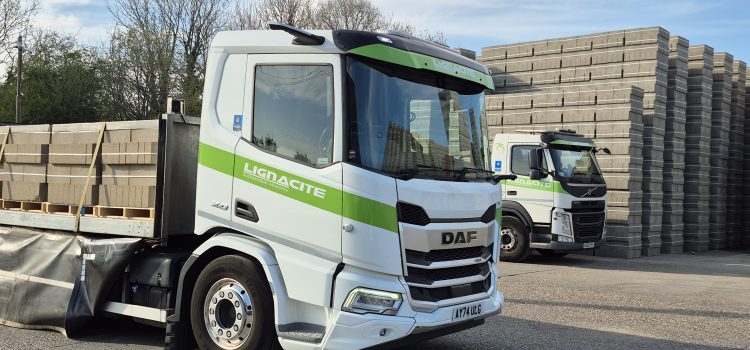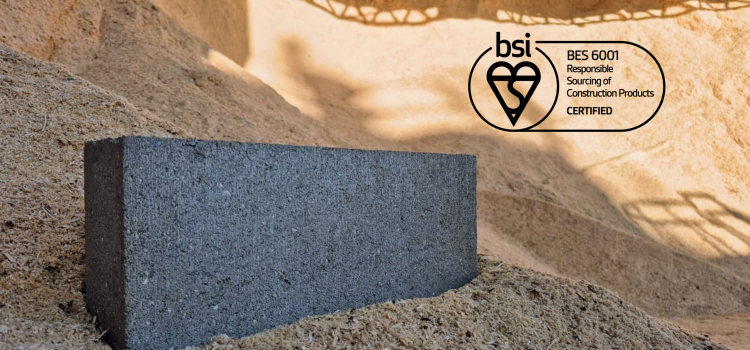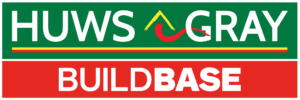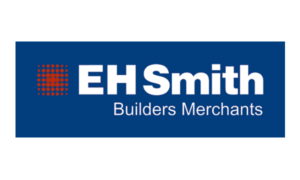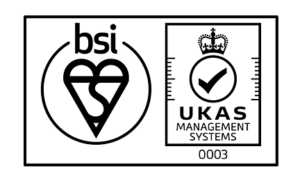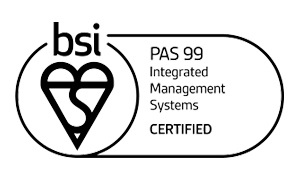Articles
Product News
The benefits of using Concrete Blockwork in Dwellings
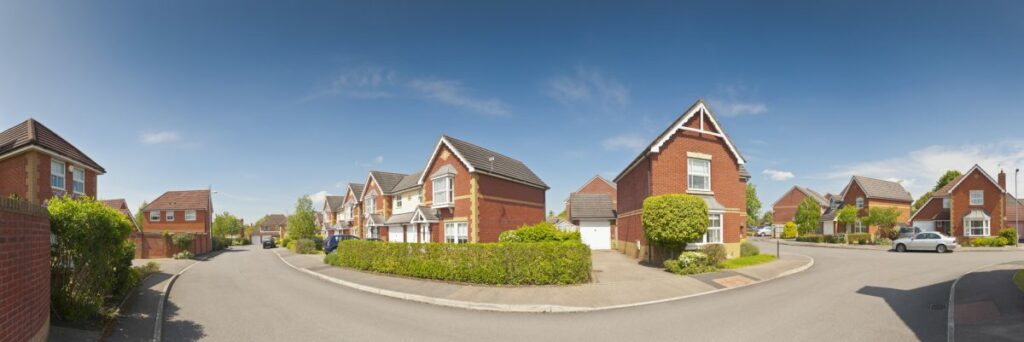
Posted by Nick Franks
The predominant method of building homes remains traditional brick and block construction. Today, approximately 80% of all new homes built in England use these materials. Despite many challenges over the years, masonry has adapted to meet current requirements. Lignacite concrete blocks, can and will continue to evolve to meet future changes.
This article focuses on 3 key areas of performance, fire, thermal performance and sound insulation which are so essential in giving builders and buyers the confidence to invest in masonry homes.
Fire Standards
Concrete blockwork has excellent fire-resisting capacity and provides fire resistance that goes beyond the requirements of Building regulations. As an example, a standard 100mm-thick aggregate loadbearing or non-loadbearing block wall will provide 2-hours of fire resistance, which is more than sufficient to provide the one-hour fire separation between apartments. Fire rarely governs the design of masonry walls, but detailing of junctions and ensuring good workmanship is important.
Concrete blockwork’s excellent performance is due in principle to its constituent materials (cement and various types of aggregates) which, when chemically combined, form a material that is essentially inert and, crucially for fire safety design, has relatively low thermal conductivity. It is this slow rate of conductivity (heat transfer) which allows concrete blockwork to act as an effective fire shield not only between adjacent spaces but also to protect itself from fire damage.
The importance of fire design in dwellings is reflected in the 2019 changes to Part B of the Building Regulations with additional amendments published in May 2020. Guidance is published in Approved Document B – Volume 1: Dwellings.
- The scope of the Guidance encompasses:
- Requirement B1: Means of warning and escape
- Requirement B2: Internal fire spread (linings)
- Requirement B3: Internal fire spread (structure)
- Requirement B4: External fire spread Requirement
- Requirement B5: Access and facilities for the fire service
- Regulations: 6(3), 7(2) and 38
The fire resistance of wall elements is provided in Eurocode 6 and manufacturers such as Lignacite provide convenient tables for their products. The required solution will depend upon whether the wall is load-bearing or non-load-bearing. Fire rarely governs the design of masonry walls, but detailing junctions and ensuring good workmanship is important.
- The ability to continue to carry the loads on the structure - excellent
- The ability to act as insulation against the heat from a fire – excellent
- The ability to prevent fire spread through the structure - excellent
Cavity barriers and fire stops are required for all forms of construction to limit the spread of fire within and between structures. - Cavity Barrier: the purpose is to close a concealed space against penetration of smoke or flame, or to restrict the movement of smoke or flame within such a space.
- Fire Stopping: the purpose is to ensure the integrity of a fire compartment - the fire stopping has at least the same fire resistance as the compartment (it is not a cavity barrier)
Approved Document B Fire Safety stipulates where cavity barriers are required and provides the parameters for designing locations for fire compartmentation.
Thermal Performance
Over time the block industry has responded to increasing standards of energy efficiency with meaningful U-values for elements first being introduced in the 1980s, followed by a procession of changes leading up to the current 2013 Part L Thermal Standards. The wall solution has often been achieved by a combination of block product enhancements coupled with the improving performance of cavity insulation materials, striking a balance between minimal wall spread and cost-effectiveness.
The consultation was concluded in March 2020 towards a Future Homes Standard. This consultation encapsulated a commitment that, by 2025, a Standard would be introduced for new build homes to be future-proofed with low-carbon heating and world-leading levels of energy efficiency. The consultation set out ambitions for achieving the Future Homes Standard, including proposed options to increase the energy efficiency requirements for new homes in 2020 as a meaningful and achievable stepping stone to the Future Homes Standard. This consultation is the first stage of a two-part consultation about proposed changes to building regulations. It also covers the wider impacts of Part L for new homes, including changes to Part F (Ventilation), its associated Approved Document guidance, airtightness and improving ‘as built’ performance of the constructed home.
It is anticipated that an average home built to the above standards will have 75-80% less carbon emissions than one built to current energy efficiency requirements (Approved Document L 2013). This is a significant step forward and it is expected that this will be achieved through very high fabric standards and a low-carbon heating system. For example, a new home built to the Future Homes Standard might have a heat pump, triple glazing and standards for walls, floors and roofs that significantly limit any heat loss. As in the economy generally, electricity is having something of a renaissance driven by measures that have resulted in a lower decarbonised electricity grid, making electric systems more viable and perhaps more able now to help achieve the energy reductions proposed. Part L standards have therefore been set based on the CO2 emissions of the dwelling, although this is not a direct measure of energy efficiency. Recognising the progress towards the electricity grid becoming zero carbon, it is proposed to make compliance based on primary energy (kW/h), with carbon emissions becoming a secondary indicator. This is a significant shift that will no doubt require a revaluation of the choice of heating and hot water systems for new dwellings.
The initial consultation addressed:
i) options to uplift standards for Part L of the Building Regulations in 2020; and changes to Part F
ii) more stringent transitional arrangements for these standards to encourage quicker implementation
iii) draft outline specification for future consultation about the Future Homes Standard
iv) clarifying the role of planning authorities in setting energy efficiency standards.
Notably, the consultation sets out two options to uplift energy efficiency standards and requirements:
- Option 1: 20% reduction in carbon emissions compared to the current standard for an average home. It is anticipated that this could be delivered by very high fabric standards (typically with triple glazing and minimal heat loss from walls, ceilings and roofs).
- Option 2: 31% reduction in carbon emissions compared to the current standard. It is anticipated that this could be delivered based on the installation of carbon-saving technology such as photovoltaic (solar) panels and better fabric standards, though not as high as in option 1 (typically double not triple glazing).
Option 2 is the Government’s preferred option as it envisages that it would deliver more carbon savings and result in lower bills for the householder but has higher build costs. So, how will the proposals impact on the building design and construction? As part of the Government’s own Impact Assessment, typical dwelling types were analysed with uplifts in the specification of the fabric efficiency and building services to meet the proposed changes.
Specification for typical building types assumed in the Impact Assessment
The overall building fabric will have to be improved. For external walls, U-values of 0.15-0.18W/m2K, are assumed for Options 1 and 2 respectively. Current wall U-values for Part L (2013) compliance are typically 0.26W/m2K or below. For masonry walls, this should not dramatically affect the built size of cavity walls when using high-performance insulation.
For example, for masonry walls meeting a U-value of 0.18W/m2K, based on the use of Lignacite Fibo 850 blockwork are:
Full Fill Cavity Wall - Facing brick | 100mm residual cavity | 90mm PIR = 0.018W/mK | 100mm block – Lignacite Fibo 850 | 12.5mm Plasterboard.
Partial Fill Cavity Wall - Facing brick | 500mm residual cavity | 90mm PIR = 0.018W/mK | 100mm block – Lignacite Fibo 850 | 12.5mm Plasterboard.
Full Cavity = Facing brick | 10mm residual cavity | 90mm PIR = 0.018W/mK | 100mm block - Lignacite Fibo 850 | 12.5mm plasterboard.
Partial Cavity = Facing brick | 500mm residual cavity | 75mm PIR = 0.018W/mK | 100mm block - Lignacite Fibo 850 | 12.5mm plasterboard.
To achieve a 0.15 U-value, the insulation sizes will have to be increased by about 25mm. Enhanced thermal bridging details will have to be adopted, and Lignacite is working closely with the Concrete Block Association to update the current Thermal Bridging Derails to suit a lower range of U-values.
It will be necessary to increase the thickness of ground floor insulation (typically by about 25mm) as well as roofs. The U-values of windows and glazed doors will have to be improved considerably, with overall U-values of 0.8 to 1.2 depending on what Option is implemented.
Designers and builders should take time to familiarise themselves with the proposals as they will have an impact on the build cost, as well as a need to revise the specification of construction elements.
Sound Insulation
Current acoustic standards have been in force for a number of years and have been successful in eradicating noise complaints and achieving a better quality of life for home occupants. Specific sound performance targets, particularly those limiting sound transfer between adjoining dwellings, are incorporated into Approved Document E1, under Part E of the Building Regulations. Performance requirements cover a range of sound frequencies from 100 Hz (low frequency) to 3150 Hz (high frequency). These requirements apply to separating walls in attached houses or apartments and separating floors in apartments.
There are two ways for demonstrating compliance:
- Robust Details (RDs) − before works have commenced the builder is required to register a Robust Detail (see www.robustdetails.com) and the construction is executed in accordance with the RD specification. There are numerous RD specifications available for masonry walls and these are predominantly of cavity construction, with cavity widths of 75 to 100mm. This is the most popular method of compliance for housebuilders and avoids any potential pitfalls when using non-RD specifications. Evidence obtained through the RD evaluation process has also identified constructions that are capable of achieving a significant uplift in performance, with specifications that can perform 3, 5, and 8 dB better than the minimum performance standard.
- Pre-Completion Testing (PCT) − where sound tests are undertaken at the end of the build and a test report is produced that details the performance levels achieved. Approved Document E provides a number of compliant solid and cavity wall constructions to select from, but in reality, any masonry construction can be adopted as long as the designer has evidence to prove the construction has a realistic chance of achieving the performance standards when tested.
Lignacite Ash GP and Lignacrete dense blocks can be specified to meet the party wall construction for number Robust Detail specifications. These constructions are cavity walls with the cavity ranging from 75 to 100mm. The Robust Details can be selected from the Robust Detail Handbook - see https://www.robustdetails.com/
Lignacite’s block manufacturing plants located in Norfolk and Essex, are responsible for producing over 100,000 blocks per day, enough blocks to build approximately 100 houses. Working closely with several of the leading Architects, Specifiers and Builders’ Merchants throughout East Anglia, London and the South East, we supply many of the major house builders and Commercial contractors.
Lignacite offers a comprehensive range of concrete blocks from ultra-lightweight to dense suitable for a wide range of building applications. The sustainability of our blocks is core to the Lignacite philosophy, and they all have a high level of recycled aggregate content, some blocks exceeding 55%.
Lignacite also offers extensive technical support for its products, the website has an extensive library with product data sheets, CAD Library, Design Guidance booklets and Site Work guide and much more. All may be accessed for free.
For further information, please contact info@lignacite.co.uk or telephone: 01842 810678.

